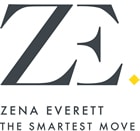I’m an Executive Coach and help my clients to understand exactly what their career goals are and the steps they need to take in order to achieve them.
The next stage of the process is to ensure that their most precious asset, their time, is used effectively in the pursuit of these goals.
This usually takes some fixing.
Most of them feel a slave to their inbox and their smartphone. They are overwhelmed with work and go home feeling that they have made very little progress, despite being busy all day.
The European vice-president of Twitter, Bruce Daisley, has recently spoken out about this ‘digital enslavement’, claiming that our addiction to digital communication – emails – has resulted in work being “fundamentally broken.” He said that rather than freeing us up, new technology is tying us to our devices and desks, raising stress and unhappiness with no discernable increase in productivity.
We are just layering on another activity on top of our work. We try to fit in our real work around everything – or everyone – that screams out the most loudly in front of us.
Twitter’s (admittedly, ironic) research found that the average worker spends 28% of their working day on emails, an activity that can feel like progress but actually achieves very little (I think this figure is quite conservative). Their working day is driven by their inbox, not the other way round.
Many of the executives I am asked to coach complain that they don’t get to start on their own tasks until late in the day. Up until then they are responding to urgent needs … other people’s urgent needs that is. By the time they get to work on their own priorities they have little energy or brain-power.
Part of the problem is that they are constantly interrupted. Microsoft Corporation taped 29 hours of people working and on average they were interrupted four times per hour. 40% of those interrupted did not resume the task; the more complex the task, the less likely they were to finish it.
“First, let me finish. Then interrupt.”
(Brian Spellman, Cartoonist’s Book Camp)
I teach them to say no constructively, then to come up with alternative solutions, that don’t hi-jack their time. One option is to have 1:1s after 4 pm – usually by that time people have figured out their own answers to their problems – without relying on you to think for them. You can please people but you don’t have to mollycoddle them.
Next, they schedule time (and sometimes a different location) to do their deep thinking work on the key results areas that their role is measured on. (If you don’t know how your role is measured, then schedule that conversation too).
This is called ‘flow working’: a state of optimum productivity. The most successful people report that they regularly work in flow.
Announcing that you are working on important tasks is also a handy way of sharing your achievements before you have even done them, (communicating your ‘wins’ is an essential part of career management and stage three of my process, after we have fixed your effectiveness).
In a ten-year study conducted by McKinsey, executives reported that they were five times more productive when they worked in flow. That means that they could get as much done by the end of Monday than their steady-state peers did in a whole week. If a full day in flow is a leap too far, the same McKinsey researchers said that if we could all just increase the time we spend in flow by 15 – 20%, overall workplace productivity would almost double.
If your team-members are over-whelmed, working too many hours but none of them in flow, and productivity and well-being are suffering as a consequence, then there’s an easy answer. Invest in my popular 75 minute workshop so we can talk about the problem and fix it.
We’ll explore:
- The distractions and interruptions that hi-jack your time now
- How to schedule in flow working for your important tasks
- Recent research on how to manage your time more productively
- How to say ’no’ constructively
Outcomes:
- As much digital emancipation as possible
- More control over how you achieve your priority tasks
- Improved personal effectiveness, energy and well-being
I look forward to talking to you.

